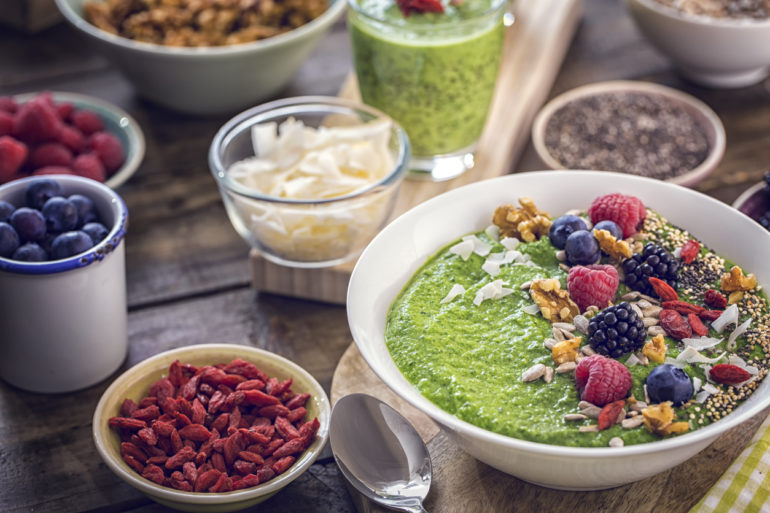On most days of the week, my morning routine does not include breakfast. I skip breakfast for two reasons: I can’t afford to buy breakfast, and I’d rather skip breakfast than eat anything unhealthy. This first meal of the day provides the energy and nutrition our mind & body needs to be productive. Most importantly, breakfast starts your metabolism and assists in burning calories throughout the rest of the day. Currently, I am striving for a healthy lifestyle; I should not be skipping breakfast.
According to WebMD, everyone should Strive for Five in every breakfast. Strive for Five means five grams of protein and five grams of fiber will complete a well-balanced breakfast. That’s not a hard health goal to reach every morning, and there’s no need to spend ten dollars on that so-called super healthy sandwich at that cafe next door. Just stick to your budget and what your body needs.
Here’s a list of some affordable breakfast foods to choose from and if they’re high in fiber, protein or both.
Oatmeal (fiber & protein)
Whole grain cereal (fiber & protein)
Banana (fiber)
Blueberries (fiber)
Low-fat yogurt (protein)
Peanut butter (protein)

iStock
Eggs (protein)
Turkey bacon (protein)
Chia seeds (fiber)
Spinach (fiber)
Almond butter (fiber & protein)
Almonds (protein & protein)
Avocado (fiber & protein)
Apple (fiber)
Strawberry (fiber)

iStock
Get creative! Combine and rotate these food items weekly for breakfast. Most of these items do not require any cooking and take very little time to prepare. With a balanced breakfast, your hangry attacks will go away. The workday will go smoothly, and even if you’re not rollin’ in cash right now, you still deserve a good day. Start it off right and meet these breakfast goals.

